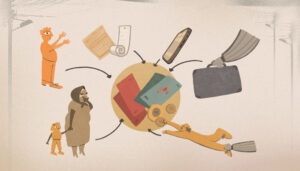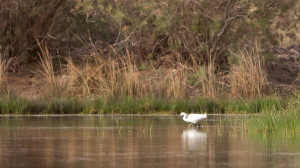Wendy Merdian and Melissa Manning continue their journey through Jordan’s biblical archeological sites. Be sure to read up on part one and stay tuned for the final part in the series!
Biblical Archeology In A Day
Written By: Melissa Manning & Wendy Merdian
Photography By: Melissa Manning
Site IV – Khirbet Iskander
From Machaerus we returned to the King’s Highway, once an ancient trade caravan route, and traveled south to the Khirbet Iskander site. Though the name “Khirbet Iskander” means the “ruins of Alexander” in reference to Alexander the Great who conquered the area in 323 BC, the site is actually the ruins of a fortified Early Bronze Canaanite city, the only one of it’s kind to be discovered and dating back to 2300 BC.
The Early Bronze Period, 3500-2000 BC and divided into four sub-periods, is so significant because this is the period in history when the first cities rose up in Mesopotamia and Egypt. It is also the period when writing was first discovered. The rise of urban centers influenced the rise of cities in the biblical lands of present day Jordan and Israel. This was the land of Canaan, peopled by the Canaanites. The Israelites didn’t come to the area until 1200 BC.
We didn’t actually go down to the site, where excavation is ongoing, but instead viewed it from the highway. Before leaving the area our leader revealed yet another hidden treasure: a Roman road milestone inscribed with the name of Nerva, Emperor of the Roman world from AD 96-98. Imagine, just lying in a ditch off the highway!
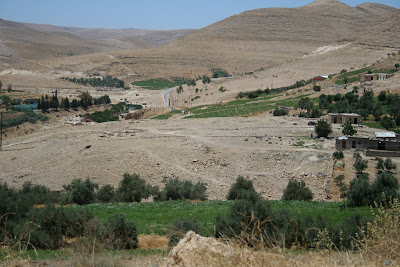
Site V – Dibon
Continuing south, we arrived in the present day village of Dhiban and the ancient city of Dibon which exist side by side. It is believed that “Dibon-gad” mentioned in Numbers 33:45 is one of the camp locations of the Israelites during the exodus. Dhiban has been occupied intermittently since the Early Bronze Age, or about 3000 BC.
Perhaps the greatest historical significance of this site is that it was here, in 1868, Rev. F.A. Klien discovered the Mesha Stele, or as it has come to be known, the Moabite Stone. The stele, erected by the Moabite King, Mesha, in about 850 B.C., is a memorial to his victories over the Israelite king, Omri, and the other men of Israel (Gad, Ataroth, Nebo, and Jehaz).
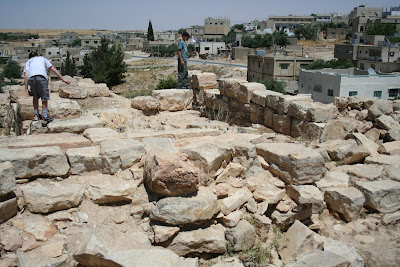
The Bedouins of the area, hoping that multiple pieces would bring more money, broke up the stone; fortunately, a French diplomat had made a squeeze (paper mache’ impression) of the intact stele. The reconstructed stele is housed in the Louvre in Paris.
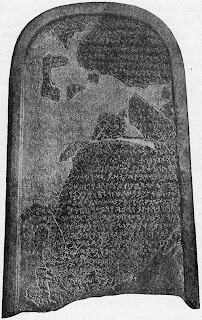
Written in the Moabite language, nearly identical to an early form of Hebrew, it contains 34 lines of history which scholars accept as agreeing with the historic accounts found in the Old Testament historical books of Kings and Chronicles.
Site VI – Aroer
The ancient settlement of Aroer is also mentioned in the Mesha Stele as being built by the Moabites. Next to rule over Aroer was Sihon, king of the Amorites. When Sihon would not allow the wandering Israelites to pass through his territory, going out against them in battle, the Israelites fought and defeated Sihon and his army and “took possession of his land from the Arnon (river) to the Jabbok, as far as to the Ammonites, for the border of the Ammonites was strong. (Numbers 21:24)
Fast forward to Jehu, king of Israel, who though he abolished the Baal worship promoted by King Ahab, nevertheless condoned the sins of a previous king, Jeroboam–worship of the golden calves in Bethel and in Dan. (II Kings 10:29)
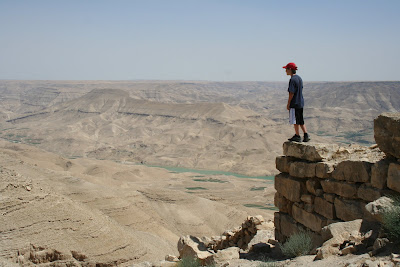
“In those days the Lord began to cut off parts of Israel. Hazael (Aramean king of Syria) defeated them throughout the territory of Israel: from the Jordan eastward, all the land of Gilead, the Gadites, and the Reubenites, and the Manassites, from Aroer, which is by the Valley of the Arnon, that is Gilead and Bashan” (II Kings 32-33).
The prophet Jeremiah’s prophesy indicates that Aroer and the surrounding area came once again under the control of the Moabites: “Stand by the way and watch, O inhabitant of Aroer! Ask him who flees and her who escapes; say, ‘What has happened?’ Moab is put to shame for it is broken; wail and cry! Tell it beside the Arnon, that Moab is laid waste.” (Jeremiah 48:19-20)


